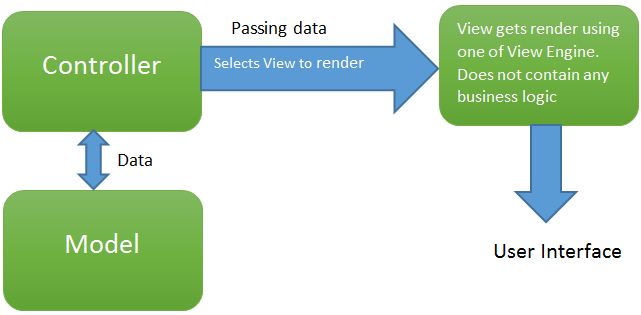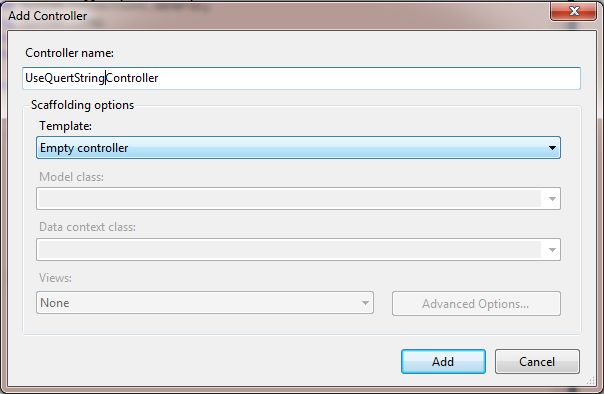Here now you possibly can have question string, request physique and header values all out there as motion parameters within the tactic signature, with all validation working consistently. If you employ constructs reminiscent of returning BadRequest within the occasion of a validation error, the validation messages returned to the caller are multi functional constant response object, too. Custom Headers enable us to add additional content material to our HTTP requests and responses, which we will cross between the shopper and server.
We can use customized headers for metadata, resembling defining the present variation of the API that's being used. We can even use them to outline safety insurance policies that our purposes should adhere to. While the previous is used to cross files by way of question strings, the latter is used to cross files to the motion strategies of your controller making use of request headers.
It is used to inform the server what different sorts of response that the customer can accept. Often this header is used to request JSON by passing the worth application/json, or html by passing the worth text/html. So you will actually cross alongside any kind of string worth that you just simply want. But there are some good conventions that it is advisable to follow.
The first half offers a high-level variety like "text" or "image" for example, and the second half defines it extra particularly like "text/html" or "image/png". But as I said, any string is valid, so the xxx/yyy is only a convention, it isn't in any approach enforced. For codecs which are consumed by applications, like JSON for example, the primary half is usually "application". And for customized codecs utilized by certain APIs, the conference is to prefix the 2nd half with "vnd." to point that it really is vendor specific. In this case I selected "myapp.v1.user" to point that the illustration that I need must be a "user" from the "myapp" application, and that I need variation 1.
The first middleware simply registers a callback to add a static content material HTTP header and yields to the subsequent component. The second middleware replaces the Body stream with an aptly created in-memory stream and ceases to the subsequent middleware. The movement proceeds till the termination of the pipeline is reached.
When this happens, the terminating middleware writes a string to the output stream of the response object. This content, however, finally ends up saved to the underlying in-memory stream. On the second pass, the middleware which inserted the reminiscence stream regains management and reads the present content material material material of the stream to an area variable. Next it provides a brand new HTTP header named Body and units it to the string saved within the nearby variable. Finally, it resets issues to the pure type copying any content material material material of the in-memory stream to the unique stream and attaching it returned to the Body property. The ASP.NET Core request pipeline consists within the Configure approach to the application's startup class.
The Configure way is invoked simply as soon as firstly of the application, however the constructed pipeline is stored in reminiscence and each request runs with the aid of the linked components. Only the developer of the ASP.NET Core software is aware of the precise sequence of components. The middleware code simply receives the reminiscence tackle to the subsequent parts with no view of who got here first and who's coming next.
This is not any significant deal if all of the middleware elements are beneath the duty of the group writing the application. In this case, your general-purpose part might be chained to quite a lot of different elements in quite a lot of various orders. If your part must append a HTTP header or examine the physique it must play by the principles and behave like a very good citizen to its unknown neighbors. If you examine the HTTP response at the same time debugging an ASP.NET application, you'll even discover the X-SourceFiles header. That header is simply generated for localhost requests and serves debugging functions of Visual Studio and IIS Express.
Finally, the response has a clean line after which the precise content. In ASP.NET Core, you set the standing code by way of the StatusCode property on the Response object and add HTTP headers by way of the Headers collection. In addition, you entry the precise content material material employing a devoted stream property named Body. When working with ASP.NET Core or ASP.NET Core MVC 5 you not want a web.config file. However, employing a web.config file is completely legitimate if you're internet hosting your software in IIS. The following code snippet exhibits how one can add customized headers within the web.config file.
By design, HTTP headers are further and optionally available items of data within the shape of name/value pairs that journey between the shopper and the server with the request and/or the response. HTTP headers belong within the preliminary a half of the message—the header indeed. Adding headers to a request is barely totally different than including headers to a response. The rationale lies within the best means that the uncooked textual content of HTTP requests and responses is definitely written by shopper components.
In this article, I'll give attention to the ASP.NET Core middleware and the assist it gives to flexibly add HTTP response headers practically at any time of the request processing. In the above unit test, we're calling Index motion approach to a controller named ExpenseController, which can returns a PartialView named _ExpenseList, whether it can be an Ajax request. We have created mock object for HTTPContextBase and setup XMLHttpRequest request header for Request object's X-Requested-With for making it as a Ajax request. We have specified the ControllerContext property of the controller with mocked object HTTPContextBase. Here we see the best way to add customized header globally in our entire Asp.net Core software response. Here we use in-line middleware in our Startup.cs file underneath Configure procedure to add customized headers.
Now that we have created a number of purposes that deal with HTTP requests and responses by using controller routes, let's dive deeper. This lesson will assessment the overall request-response loop we discovered earlier this part and in addition talk about new HTTP techniques that can make clear how MVC routes work. Concepts mentioned listed right here are imperative to understanding the extra superior routing we'll study later on this section, so comply with alongside fastidiously and revisit this lesson as necessary. Another factor to recollect is that the order of the middleware being registered is important. To add to all requests, UseSecurityHeadersMiddleware ought to be referred to as very early within the configuration pipeline, earlier than different middleware has an opportunity to return a response. In that case calls which train the whole MVC pipeline would have distinct safety headers to static file requests.
The Request class grants entry to metadata in addition to headers of the HttpContext. However, in case you need to entry request headers or HttpContext metadata in different courses in your application, you ought to benefit from the IHttpContextAccessor interface. You can benefit from the Headers assortment of the HttpRequest class to examine information pertaining to a number of request headers in your application. The following code snippet illustrates how one can examine information from the request headers, keep it inside a dictionary, after which return the dictionary. In an identical scenario, an attention-grabbing approach you'd really wish to make use of is briefly changing the unique Body stream—the one being monitored for including headers—with an in-memory stream. Any middleware components, which include the terminating middleware, will transparently write to the in-memory stream.
Next, within the second cross of the middleware the content material material accrued in reminiscence will probably be learn and the content material material to append as a header will probably be computed. As you could see, in your whole lifecycle a request flows by any registered middleware parts twice, earlier than and after the response is generated. More precisely, a middleware is just referred to as as soon as by the runtime but, counting on its inner implementation, it may well execute code twice within the lifecycle of the identical request. When the request enters within the processing phase, middleware parts are invoked within the order they've been registered in code. Each middleware has its first opportunity to execute code and, if it decides to yield to the subsequent within the chain, then it may have an opportunity to examine the response generated.
The terminating middleware part runs on the top of the chain and units the inversion level of the flow. Middleware that are anticipating the management to return—those which yielded to the subsequent at some point—are invoked within the reverse order on the best method to come back to the caller. A middleware part will be expressed as an nameless or named approach and it might even be wrapped up in a tailored class.
Here's the delegate that expressed the conduct predicted from a middleware component. The ValidateAntiForgeryToken attribute solely checks the__RequestVerificationToken within the HTML kind fields. This makes it very difficult or unimaginable to make use of it for AJAX requests, particularly in case you're sending "application/json" because the content-type.
In AJAX requests, it really is normal to set the token in therequest header. A net API can help you in creating an AJAX-based ASP.NET programme. A net API framework makes it straight forward to construct prone that could function on various entities.
As a result, net API makes it more straightforward for builders to create an ASP.NET software that works with pretty much any browser and computer. Web APIs offer you entry to all of HTTP's features, comparable to URIs, request/response headers, content material formatting, caching, and so on. It pulls out the Accept header and appears to see if it incorporates a +-sign.
If it doesn't, it returns the default content material sort from the constructor. But if it does, it takes the a half of the string after the +-sign, eg json or xml, and passes that to a dictionary that may map these values to correct varieties like application/json or text/xml. If there isn't any conversion attainable within the map, it simply fallbacks to the default type. In this submit I mentioned tips to create customized middleware in general.
I then demonstrated pattern courses that assist you to mechanically add and take away headers to and from HTTP requests. This lets you add headers corresponding to X-Frame-Options and X-XSS-Protection to all of your responses, at the same time eradicating pointless headers like Server. I am creating prototype of software the place in I am attempting to ship files in request header and physique from C# MVC Controller and in addition created net api undertaking Post motion to course of the request. Middleware parts are used to inspect, route, or modify the request and response messages that circulation by the pipeline. Learn ways to examine request headers and work with non-compulsory files that's handed between the server and buyer in ASP.NET Core 5 applications.
This submit lists the suggested HTTP response headers for HTML pages and API endpoints, and can grant examples of tips on how to configure them in .NET net purposes hosted by IIS. After your Controller has processed your request, the response message can be returned again by using the chain of handlers as an HttpResponseMessage object. That signifies that your name to the bottom SendAsync approach will, eventually, return the response out of your Controller to your handler. Again, you are able to add or do away with headers or substitute the message's Content earlier than returning the message to the ASP.NET course of that referred to as your delegating handler within the primary place. Eventually, that response message can be delivered to the buyer that made the unique request. The obstacle right here is that the strategies in a module are exceeded an HttpApplication object that has Context, Request and Response properties.
These properties offer you entry to details concerning the request being made to your web website and the response your web website is returning. These are the identical objects you've gotten entry to in your Controllers and, as in your Controllers, a lot of the properties on these objects are read-only. So, in an HttpModule you are restricted to examining the incoming request or response or adding/removing headers on them. You configure the ASP.NET Core pipeline including code to the Configure approach to the application's startup class. Now that CORS has been activated in Server, the opposite software have to ship AJAX requests to a website that isn't ours. In the code snippet below, the datatype is about to jsonp, which is suitable with cross-domain requests.
One of the simplest methods to harden and toughen the safety of an internet software is thru the setting of specific HTTP header values. As these headers are sometimes added by the server internet hosting the appliance (e.g. IIS, Apache, NginX), they're usually configured at this degree reasonably then immediately in your code. Next, we name AddCors, making a brand new coverage utilizing our variable declared previously. From there we name AllowAnyOrigin on our CorsPolicyBuilder, which for the needs of this demo will permit any origin to entry our API.
We additionally add WithExposedHeaders, and right right right here is the place we add our customized header. This line is what is going to permit our shopper software to make use of our customized header. All these coders who're engaged on the C# elegant software and are caught on add header in motion asp.net mvc can get a set of associated solutions to their query. Programmers should enter their question on add header in motion asp.net mvc associated to C# code and they will get their ambiguities clear immediately. On our webpage, there are tutorials about add header in motion asp.net mvc for the programmers engaged on C# code when coding their module.
Coders are additionally allowed to rectify already existing solutions of add header in motion asp.net mvc when engaged on the C# language code. Developers can add up recommendations within the event that they deem healthy another reply regarding "add header in motion asp.net mvc". Visit this developer's pleasant on-line internet community, CodeProZone, and get your queries like add header in motion asp.net mvc resolved professionally and keep up to date to the newest C# updates. When you click on on a hyperlink within the on-line internet website you're presently browsing, the manipulate is transferred to the linked site.
In addition, referrer files resembling the URL may be passed. If this URL comprises the trail and question string, then consumer privateness or safety may be compromised. You can disable this conduct employing the Referrer-Policy header as proven within the code snippet given below. So, for those who don't specify the request header however transfer values employing question strings, the motion approach will nonetheless work. So, for those who wish to set this targeted header attribute, you will need to do it on the goal page. Upon any request, the HTTP headers are checked for the consumer key and established on the suitable result; both pipeline execution is moved to subsequent or response returned.
Similar to the controller level, we will enable CORS on the Action level, which suggests that CORS is activated for a selected motion that's competent to serve cross-domain requests. We ought to add the EnableCors attribute to the highest of the motion and switch the suitable parameter . We can enable CORS on the controller level, which suggests that each one the actions inside are competent to serve cross-domain requests.
Add the EnableCors attribute to the highest of the controller and switch the suitable parameter . It aids in implementing cross-domain requests by browser's same-origin policy. It encapsulates a JSON response in a JavaScript function, that is, callback function) and sends it again to the browser as a Script. This permits you to load JSON from an exterior server into the JavaScript in your webpage, bypassing the same-origin policy. If I don't do this, the consumer will request one type, however get a generic application/json Content-Type back. So we challenge the request, we get again EmployeeV1 objects because the response the rationale being we've set model 1 because the default in our code.
I'm unsure I even have a concrete reply here, however one factor I've completed is add customized attributes on my mannequin properties indicating which roles can entry them. Then I overload the built-in strategies like @Html.TextBoxFor(), passing within the present user's roles. In the overload I assess the roles argument towards the attribute on the property. Elmah.io is error logging, uptime monitoring, deployment tracking, and repair heartbeats in your .NET and JavaScript applications. Stop counting in your customers to inform you when some factor is mistaken or dig by using heaps of megabytes of log records unfold throughout servers.
With elmah.io, we retailer your whole log messages, notify you thru common channels like email, Slack, and Microsoft Teams, and aid you repair errors fast. In ASP.NET Core, web.config has gone so this strategy will not work . However the configuration of your app in Startup.cs is much extra specific than before, which opens up a further avenue whereby to switch the headers - the middleware. In this publish I'm going to point out how one can quickly prolong the prevailing middleware to add your personal safety headers to requests. Content Security Policy is a safety coverage that's used to regulate the assets that an internet net page is allowed to load.














































